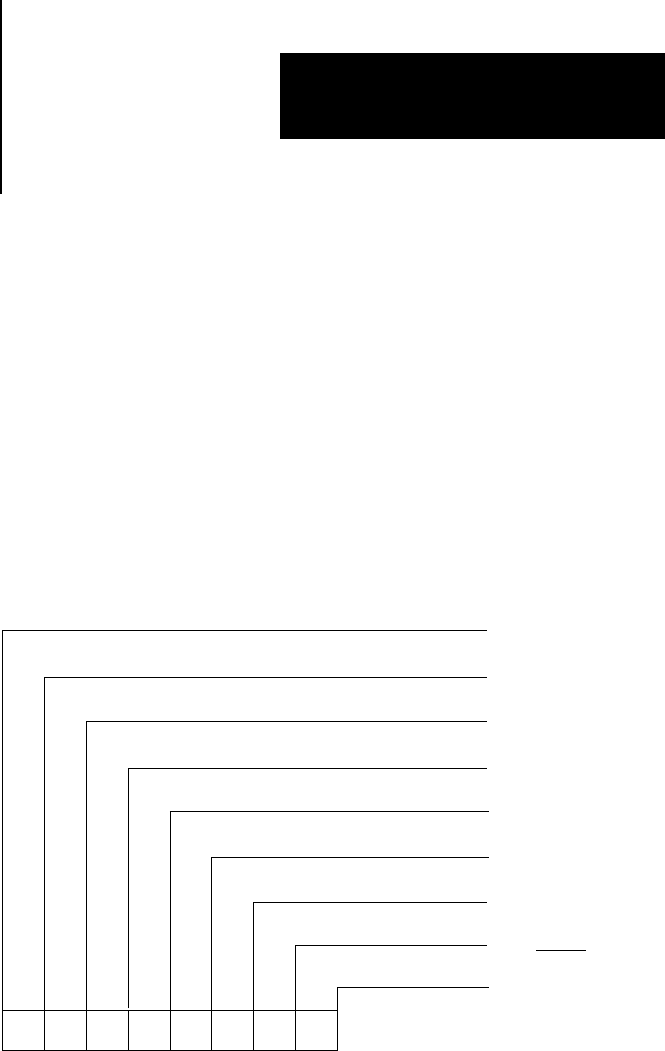User Manual Owner's manual
Table Of Contents
- 1772-6.5.8, Mini-PLC-2/02, -2/16, -2/17 Processor, User Manual
- Important User Information
- Summary of Changes
- Table of Contents
- 1 - Using This Manual
- 2 - Fundamentals of a Programmable Controller
- 3 - Hardware Features
- 4 - Installing Your Programmable Controller
- 5 - Starting Your Processor
- 6 - Maintaining and Troubleshooting Your Processor
- 7 - Memory Organization
- 8 - Scan Theory
- 9 - Relay-Like Instructions
- 10 - Program Control Instructions
- 11 - Timers and Counters
- 12 - Data Manipulation and Compare Instructions
- 13 - Three-Digit Math Instructions
- 14 - EAF Math Instructions
- 15 - EAF Log, Trig, and FIFO Instructions
- 16 - EAF Process Control Instructions
- 17 - Jump Instructions and Subroutines
- 18 - Block Transfer
- 19 - Data Transfer Instructions
- 20 - Bit Shift Registers
- 21 - Sequencers
- 22 - Selectable Timer Interrupts
- 23 - Report Generation
- 24 - Program Editing
- 25 - Programming Techniques
- 26 - Program Troubleshooting
- A - Specifications
- B - Processor Comparison Chart
- C - Number Systems
- D - Glossary
- E - Quick Reference
- Index
- Back Cover

Number Systems
Appendix C
C-3
Binary numbering is used in all digital systems to store and manipulate
data. This is a numbering system made up of two numbers: 0 and 1
(Table C.A). All binary numbers are composed of these digits.
Information in memory is stored as an arrangement of 1 and 0. The value
of binary number depends on the digits used and the place value of
each digit.
Each place value in a binary number represents a power of two starting
with two raised to the zero power (2
0
=1) (Figure C.3). You can compute
the decimal value of a binary number by multiplying each binary digit by
its corresponding place value and adding these numbers together.
Figure C.3
Binary
Numbering System
111 11110
1 x 2
7
= 128
1 x 2
6
= 64
1 x 2
5
= 32
0 x 2
4
= 0
1 x 2
3
= 8
1 x 2
2
= 4
1 x 2
1
= 2
1 x 2
0
= 1
128
64
32
8
4
2
1___
239
10
11101111
2
=
239
10
10406-I
Binary
Coded Decimal System
The binary coded decimal (BCD) format expresses a decimal value as an
arrangement of binary digits. Each group of 4 binary digits is used to
represent a decimal number from 0 to 9. All BCD numbers are composed
of these digits. The value of BCD number depends on the digits used and
the place value of these digits.
Each place value in a BCD number represents a power of two starting with
two raised to the zero power (2
0
=1) (Figure C.4). You can compute the
decimal value of a binary number by multiplying each binary digit by its
corresponding place value and adding these numbers together.
Binary Numbering System










